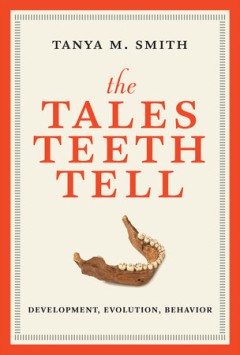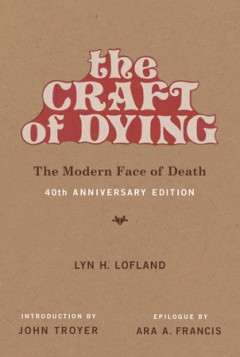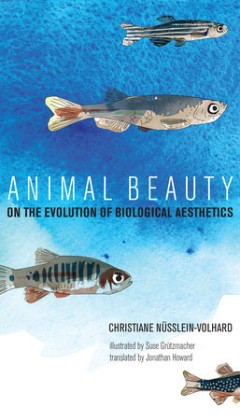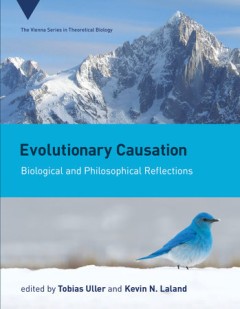Filter by

Plagues and the Paradox of Progress: Why the World Is Getting Healthier in Wo…
Why the news about the global decline of infectious diseases is not all good. Plagues and parasites have played a central role in world affairs, shaping the evolution of the modern state, the growth of cities, and the disparate fortunes of national economies. This book tells that story, but it is not about the resurgence of pestilence. It is the story of its decline. For the first time in re…
- Edition
- -
- ISBN/ISSN
- 9780262348072
- Collation
- -
- Series Title
- -
- Call Number
- -

The Tales Teeth Tell: Development, Evolution, Behavior
What teeth can tell us about human evolution, development, and behavior. Our teeth have intriguing stories to tell. These sophisticated time machines record growth, diet, and evolutionary history as clearly as tree rings map a redwood's lifespan. Each day of childhood is etched into tooth crowns and roots—capturing birth, nursing history, environmental clues, and illnesses. The study of an…
- Edition
- -
- ISBN/ISSN
- 9780262348928
- Collation
- -
- Series Title
- -
- Call Number
- -

Howard Hiatt: How This Extraordinary Mentor Transformed Health with Science a…
The seven-decade career of Howard Hiatt, a pioneer in public health, advocate for global health and health equity, a mentor to generations of healthcare leaders. Howard Hiatt—physician, scientist, advocate for global health, and mentor to generations of healthcare leaders—has spent much of his seven-decade career being ahead of his time. His innovative ideas as head of Harvard's School o…
- Edition
- -
- ISBN/ISSN
- 9780262349338
- Collation
- -
- Series Title
- -
- Call Number
- -

Fables and Futures: Biotechnology, Disability, and the Stories We Tell Ourselves
How new biomedical technologies—from prenatal testing to gene-editing techniques—require us to imagine who counts as human and what it means to belong. From next-generation prenatal tests, to virtual children, to the genome-editing tool CRISPR-Cas9, new biotechnologies grant us unprecedented power to predict and shape future people. That power implies a question about belonging: which pe…
- Edition
- -
- ISBN/ISSN
- 9780262351799
- Collation
- -
- Series Title
- -
- Call Number
- -

The Craft of Dying: The Modern Face of Death
The fortieth-anniversary edition of a classic and prescient work on death and dying. Much of today's literature on end-of-life issues overlooks the importance of 1970s social movements in shaping our understanding of death, dying, and the dead body. This anniversary edition of Lyn Lofland's The Craft of Dying begins to repair this omission. Lofland identifies, critiques, and theorizes 1970s …
- Edition
- -
- ISBN/ISSN
- 9780262353656
- Collation
- -
- Series Title
- -
- Call Number
- -

Agrobiodiversity: Integrating Knowledge for a Sustainable Future
Experts discuss the challenges faced in agrobiodiversity and conservation, integrating disciplines that range from plant and biological sciences to economics and political science. Wide-ranging environmental phenomena—including climate change, extreme weather events, and soil and water availability—combine with such socioeconomic factors as food policies, dietary preferences, and market …
- Edition
- -
- ISBN/ISSN
- 9780262348805
- Collation
- -
- Series Title
- -
- Call Number
- -

Animal Beauty: On the Evolution of Biological Aesthetics
An illustrated exploration of colors and patterns in the animal kingdom, what they communicate, and how they function in the social life of animals. Are animals able to appreciate what humans refer to as “beauty”? The term scarcely ever appears nowadays in a scientific description of living things, but we humans may nonetheless find the colors, patterns, and songs of animals to be beauti…
- Edition
- -
- ISBN/ISSN
- 9780262353359
- Collation
- -
- Series Title
- -
- Call Number
- -

The Market in Mind: How Financialization Is Shaping Neuroscience, Translation…
- Edition
- -
- ISBN/ISSN
- 9780262352963
- Collation
- -
- Series Title
- -
- Call Number
- -
- Edition
- -
- ISBN/ISSN
- 9780262352963
- Collation
- -
- Series Title
- -
- Call Number
- -

Evolutionary Causation: Biological and Philosophical Reflections
A comprehensive treatment of the concept of causation in evolutionary biology that makes clear its central role in both historical and contemporary debates. Most scientific explanations are causal. This is certainly the case in evolutionary biology, which seeks to explain the diversity of life and the adaptive fit between organisms and their surroundings. The nature of causation in evolutionar…
- Edition
- -
- ISBN/ISSN
- 9780262353199
- Collation
- -
- Series Title
- -
- Call Number
- -

Convergent Evolution on Earth: Lessons for the Search for Extraterrestrial Life
An analysis of patterns of convergent evolution on Earth that suggests where we might look for similar convergent forms on other planets. Why does a sea lily look like a palm tree? And why is a sea lily called a “lily” when it is a marine animal and not a plant? Many marine animals bear a noticeable similarity in form to land-dwelling plants. And yet these marine animal forms evolved in …
- Edition
- -
- ISBN/ISSN
- 9780262354172
- Collation
- -
- Series Title
- -
- Call Number
- -
 Computer Science, Information & General Works
Computer Science, Information & General Works  Philosophy & Psychology
Philosophy & Psychology  Religion
Religion  Social Sciences
Social Sciences  Language
Language  Pure Science
Pure Science  Applied Sciences
Applied Sciences  Art & Recreation
Art & Recreation  Literature
Literature  History & Geography
History & Geography